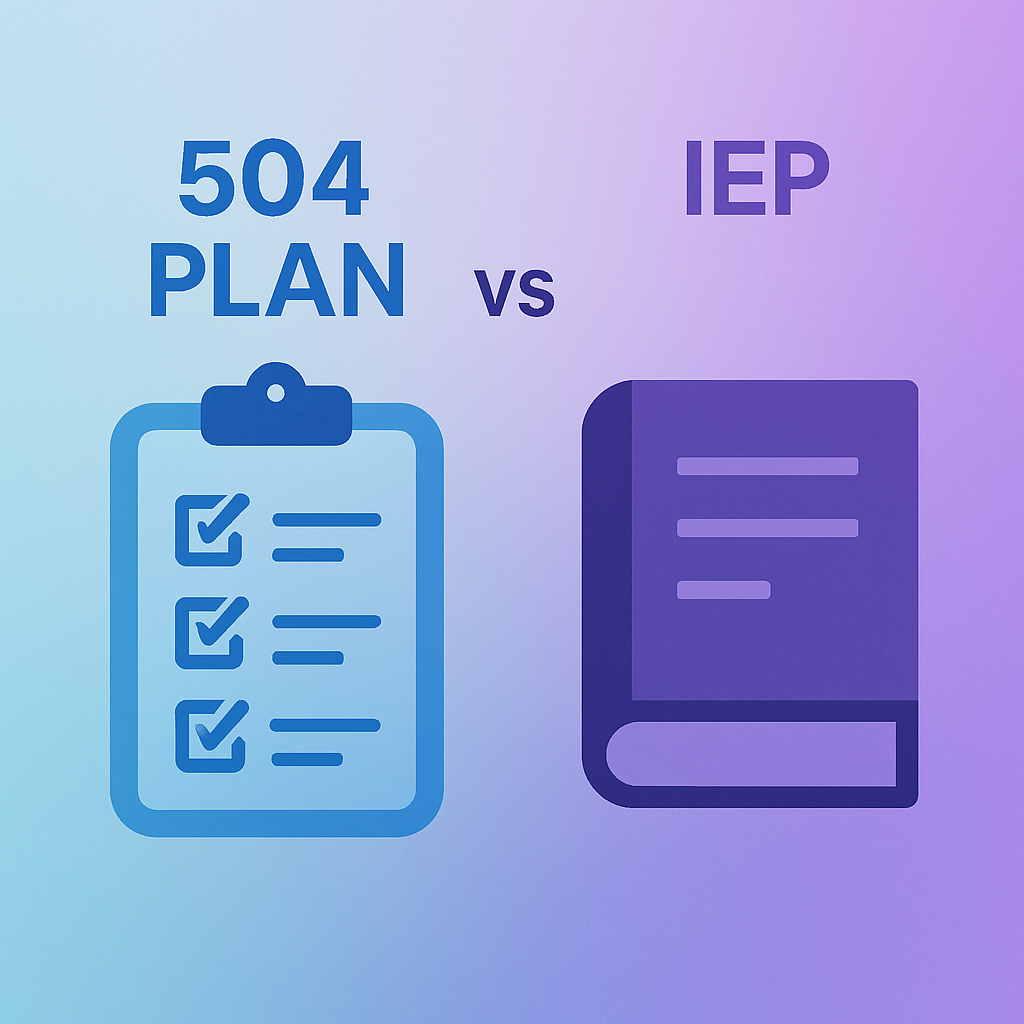Blog / What’s the Difference Between a 504 Plan and an IEP?
What’s the Difference Between a 504 Plan and an IEP?
Both 504 Plans and IEPs help kids get support at school, but they’re not the same thing. Here's how they differ — and how to know which one fits your child.
If you're just starting out on the special education journey, you’ve probably heard two terms thrown around a lot: 504 Plan and IEP. I remember hearing them early on and thinking, "Aren’t they basically the same thing?"
They’re not.
Both offer support for kids who need it in school — but how they do it, and who qualifies, is pretty different. Let me break it down in plain English, the way I wish someone had done for me.
What is a 504 Plan?
A 504 Plan is like a blueprint for how a child with a disability will get access to learning, mostly through accommodations. It falls under a civil rights law — Section 504 of the Rehabilitation Act — and it’s all about ensuring equal access.
Think: changes to how a child learns, without changing what they’re expected to learn.
Common examples:
- Extra time on tests
- Preferential seating
- Breaks when overwhelmed
- Use of technology (like a speech-to-text tool)
There’s no academic eligibility testing required for a 504 — just proof that a child has a disability that limits a major life activity (like learning, thinking, or concentrating).
What is an IEP?
An IEP — short for Individualized Education Program — is way more detailed and falls under IDEA, the special education law (Individuals with Disabilities Education Act). An IEP is not just about access — it’s about providing specialized instruction.
Think: custom learning goals, specialized teaching, and services like speech or occupational therapy.
An IEP includes:
- Specific goals tailored to your child
- Progress tracking
- A dedicated team (including you!)
- Annual reviews and re-evaluations
- Related services if needed
To get an IEP, your child has to qualify under one of 13 categories, like Autism, ADHD (as Other Health Impairment), Emotional Disturbance, or Specific Learning Disability.
So Which One Does My Child Need?
Here’s the simplest way I can put it:
- If your child needs support but doesn’t need specialized instruction, a 504 Plan might be enough.
- If your child needs changes to how they’re taught, needs goals, and progress monitoring, then they likely need an IEP.
For my son, we started with a 504, but as his needs grew and became more complex, we realized he needed an IEP. Thankfully, organizations like the Brighton Center helped me understand the difference — and that education is not one-size-fits-all.
Final Thoughts
You don’t have to figure this out alone. Whether your child has a diagnosis already or you're just trying to get answers, knowing the difference between an IEP and a 504 is one of the first steps to getting the right support in place.
Kaz is here to help walk you through both options, in plain language, so you can advocate with confidence.
— Keith
© 2025 Meet Kaz, a Public Benefit Corporation. All rights reserved.

